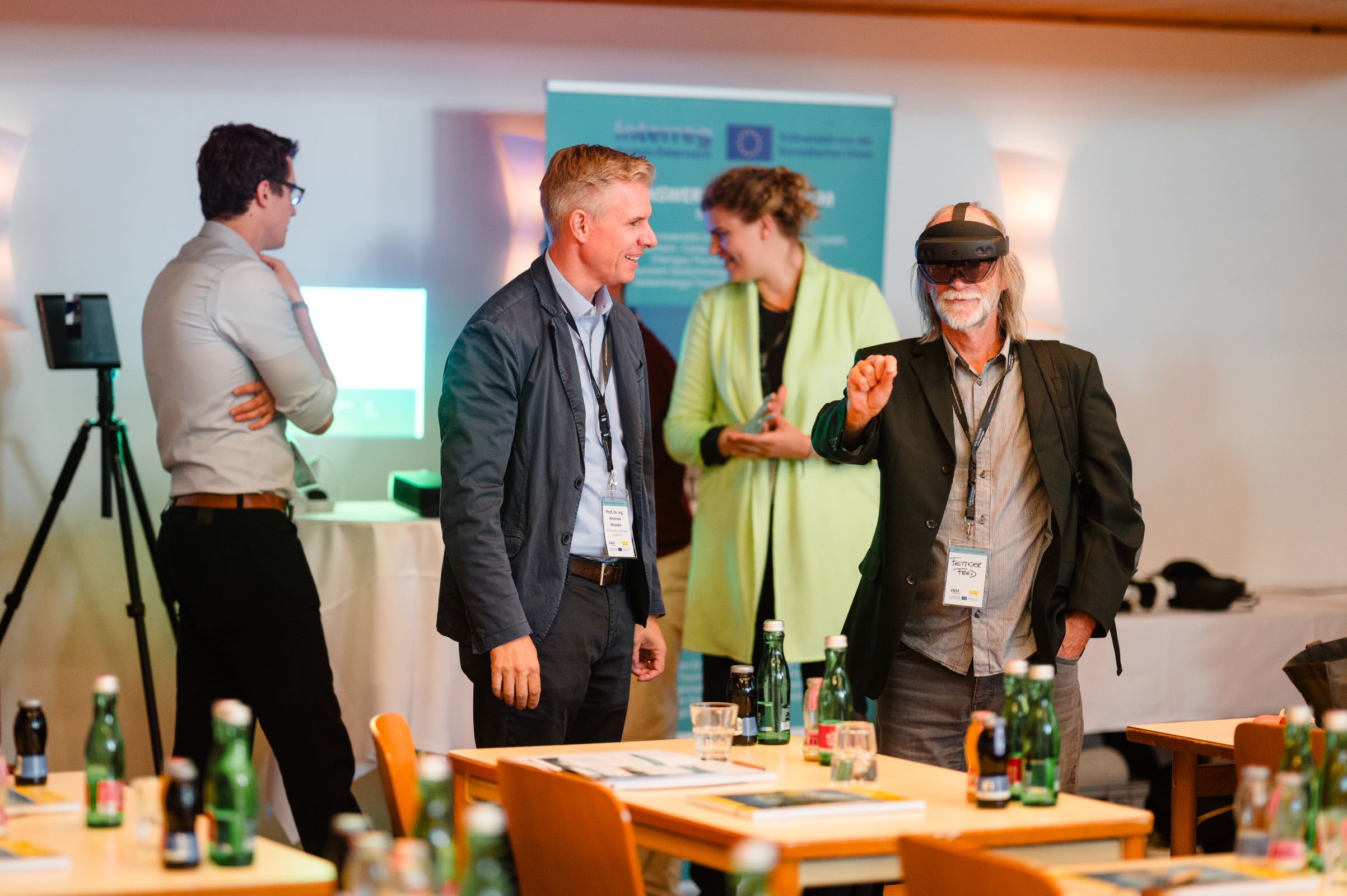Alpine region worth living in
Development of participatory solutions for sustainable tourism in the German-Austrian Alpine region
Project background
How can sustainable tourism succeed and what opportunities does the use of technical innovations such as virtual reality offer with regard to sustainable tourism in the German-Austrian Alpine region? The project idea is to develop participatory and digital solutions for sustainable tourism in the German-Austrian Alpine region. The regional population, the tourism and leisure industry as well as regional politics are to be actively involved.
Through close cooperation between science, technology and the project regions in Upper Austria (Salzkammergut with the Capital of Culture 2024), Upper Bavaria (Chiemgau) and Salzburg (Fuschlsee and beyond), the project aims to create an innovation network. This network should help to promote sustainable development in rural areas and develop tourism in the regions in line with the needs of the local population.
The relevance of the project is reflected in its aim to promote sustainable tourism in this highly frequented region, while at the same time taking into account the needs of the local population. The integration of participatory, digital solutions and technological innovations helps to achieve a balance between tourism growth and local quality of life. By connecting stakeholders from science, technology, business and politics, the project aims to achieve broad acceptance for sustainable changes that will contribute to the development of the German-Austrian Alpine region.
Project objective
The Interreg research project aims to develop sustainable tourism in the project regions. The aim is to create a network that promotes sustainable tourism in the German-Austrian Alpine region. Through the development of digital solutions and innovative approaches, the distribution of tourist flows is to be optimized in order to avoid congestion in certain areas and at the same time create new, attractive offers. This helps to reduce the environmental impact and maintain the quality of life of the local population.
Project procedure
The project partners are working on six work packages across all countries over three periods:
1. Survey of the status quo
2. Congresses in the partner regions
3. Bottom-up workshops with the local population
4. Network meetings to form cross-border innovation networks
5. Digital implementation
6. White paper and project report
As a technology partner, Rosenheim University of Applied Sciences is working on a possible expansion of the cultural tourism offer with the help of innovative technologies. One focus is on the digital twin in tourism. This combines digital models of cultural assets with digital content (events, opening times, etc.). Five virtual tours of churches, museums and other culturally valuable institutions will be created. In the simplest case, access will be via the hey.bayern platform.
In addition, the digital twins will be made accessible using virtual reality (VR) and augmented reality (AR) technologies and five demonstrators each will be set up for the areas of VR and AR. In the VR area, collaborative virtual tours of the digital twins in the Metaverse will be made possible. Virtual reality enables immersion in a cultural environment, which is created through stereo vision with virtual reality glasses and intuitive interaction in such an environment.
In the area of AR, avatars will be used to tell stories about specific cultural assets. A historical figure could describe the events of a specific location in the form of an avatar in the field of augmented reality and invite users to interact with them. By superimposing historical buildings and images, guests can travel back in time.
Innovation
The innovative approach of the project is expressed on the one hand in the fact that the regional population, as well as the tourism and leisure industry and regional politics, are closely involved in the work process. On the other hand, innovative technologies such as digital twins, virtual and augmented reality are used to promote sustainable tourism development and expand the cultural tourism offer in the German-Austrian Alpine region. These technologies can make cultural assets available in a sustainable way and be part of virtual tourism.
Virtual tours not only offer the advantage of providing access to user groups with limited mobility, but also the opportunity to experience vacation experiences individually, flexibly and without long travel and waiting times. The opportunity to take part in a guided virtual tour can prevent overtourism and promote sustainable tourism. The additional offers thus have a positive impact on the environment and the local population. The integration of e-commerce offers from local businesses also opens up new sales opportunities and contributes to green and digital tourism.
The general public benefits from the implementation of the project, as the interests of the regional population are actively involved and represent an important component in the development of participatory solutions for sustainable tourism in the German-Austrian Alpine region.
The participating research partners benefit from an active exchange, the networking of different levels of knowledge and the practical implementation together with the tourism partners and the innovation network, which is intended to remain sustainable.
Sub-project lead
Project staff
johanna.mahr-slotawa[at]th-rosenheim.de
ORCID iD: 0009-0002-7305-6008
Project duration
2022-11-01 - 2025-10-31Project partners
Funding programme
Interreg Bayern-Österreich
Weblinks
Virtueller Rundgang: Höhlenburg (Schlossbrauerei in Stein an der Traun, Bayern)Virtueller Rundgang: Ploetzhof Museum (Altes Gefängnis in Hof bei Salzburg, Österreich)
Virtueller Rundgang: Rauchhaus Mühlgrub („Glücksplatz“ in Hof bei Salzburg, Österreich)
Virtueller Rundgang: Museums Salz und Moor (Historisches Brunnhaus Klaushäusl in Grassau, Bayern)
Virtueller Rundgang: Campus Chiemgau (in Traunstein, Bayern)


